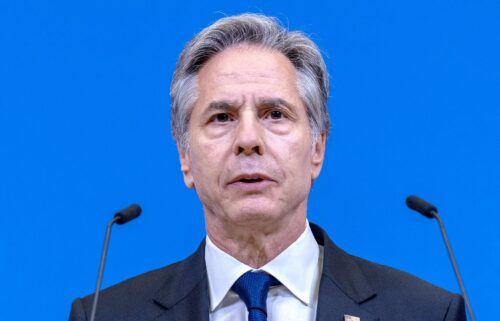These Virgin Galactic ticket holders have waited more than a decade. Now they’ve finally gone to space
By Jackie Wattles, CNN
(CNN) — Virgin Galactic notched its third commercial spaceflight, launching three paying customers on a roughly 90-minute flight that briefly touched the edge of space.
The customers riding inside the space plane’s cabin were among Virgin Galactic’s first ticket holders, having waited nearly two decades for the opportunity. The space tourists reserved their rides as early as 2005, according to a Virgin Galactic news release, when the company was still in the early stages of its development program.
The passengers included Las Vegas real estate magnate Ken Baxter, who confirmed his participation on his personal website.
Virgin Galactic did not reveal the names of the other two customers prior to the launch but later issued a news release with their names and countries of origin: Timothy Nash, a British citizen from South Africa; and Adrian Reynard from the United Kingdom.
The company’s rocket-powered space plane, VSS Unity, took off at 8:34 a.m. MT (10:34 a.m. ET) on Friday from Spaceport America — a sprawling New Mexico campus that Virgin Galactic uses as a home base — attached to a massive twin-fuselage mothership called VMS Eve, according to updates shared on social media. (The event was not livestreamed.)
The mothership took off like an airplane and ascended to more than 40,000 feet (12,192 meters) before releasing the VSS Unity about 45 minutes into the flight. VSS Unity then fired its rocket engine to propel the spacecraft and passengers to more than 50 miles (80 kilometers) above Earth’s surface. They enjoyed a few minutes of weightlessness and sweeping views of our planet below before free-falling back to a runway landing at the spaceport.
Also on board were two Virgin Galactic pilots, commander Nicola Pecile and Michael Masucci. And the company’s chief astronaut instructor, Beth Moses, rode in the cabin alongside the passengers, serving as a tour guide on the suborbital flight that reached altitudes the US government regards as the beginning of outer space. In the US, officials recognize the 50-mile (80-kilometer) mark as the boundary where space begins, while some international organizations use the Karmán line, which is 62 miles (100 kilometers) above Earth’s surface. But there’s a lot of gray area.
This mission kicked off what Virgin Galactic said would be a regular cadence for the company, with tourists embarking on supersonic trips to high altitudes as often as once per month.
Viring Galactic’s path
The start of regular operations comes after years of delays, development hang-ups and testing failures, including a 2014 test flight that left a copilot dead.
Since then, the company has been steadily working to improve its technology. After Virgin Galactic founder Richard Branson traveled aboard the space plane in the summer of 2021 — on a flight later deemed to have traveled off-course — the company spent more than a year working on a technology “enhancement” program.
Virgin Galactic CEO Michael Colglazier said during an August call with investors that Galactic’s subsequent flights were “excellent,” setting the company up to begin regular operations.
Still, questions loom about whether the company can right itself financially and start turning a profit in the near future, and investors so far have appeared uncertain. Virgin Galactic stock has shed more than 30% of its value over the past month despite the company’s recent successes. (It currently trades around $2 per share.)
Ultimately, the company plans to send hundreds of people to space, offering the thrill to anyone who can afford it and competing directly with Jeff Bezos’ Blue Origin in the suborbital space tourism business. Blue Origin plans to return to flight as soon as this year after an uncrewed science mission of its suborbital rocket in 2022 failed following a launch out of its facilities in Texas.
On its first commercial launch, Virgin Galactic carried members of the Italian air force and an Italian engineer on a science research mission. And on its last flight, on August 10, VSS Unity carried the first space travelers from Antigua, a mother-daughter duo who won their seats in a charity fundraiser, and a former US Olympian, Jon Goodwin, who became the second person with Parkinson’s disease to travel to space.
All told, Virgin Galactic has sold about 800 tickets, including 600 at earlier price points up to $250,000 and, more recently, another couple hundred at $450,000 per ticket.
Baxter, one of the passengers on Friday’s flight, has documented much of his journey on his website and on social media. In a post before launch, he recounted what it has been like to wait on the sidelines for nearly 20 years, waiting for his chance to fly.
“I’ve watched through the venture’s infancy, mourned the tragic loss of a brave pilot and serious injury to another in 2014 and celebrated the successful flight of our founder, Sir Richard in July, 2021,” he wrote in a post titled “My Turn.” “Through all victories and setbacks my dream has never faded.”
The-CNN-Wire
™ & © 2023 Cable News Network, Inc., a Warner Bros. Discovery Company. All rights reserved.

